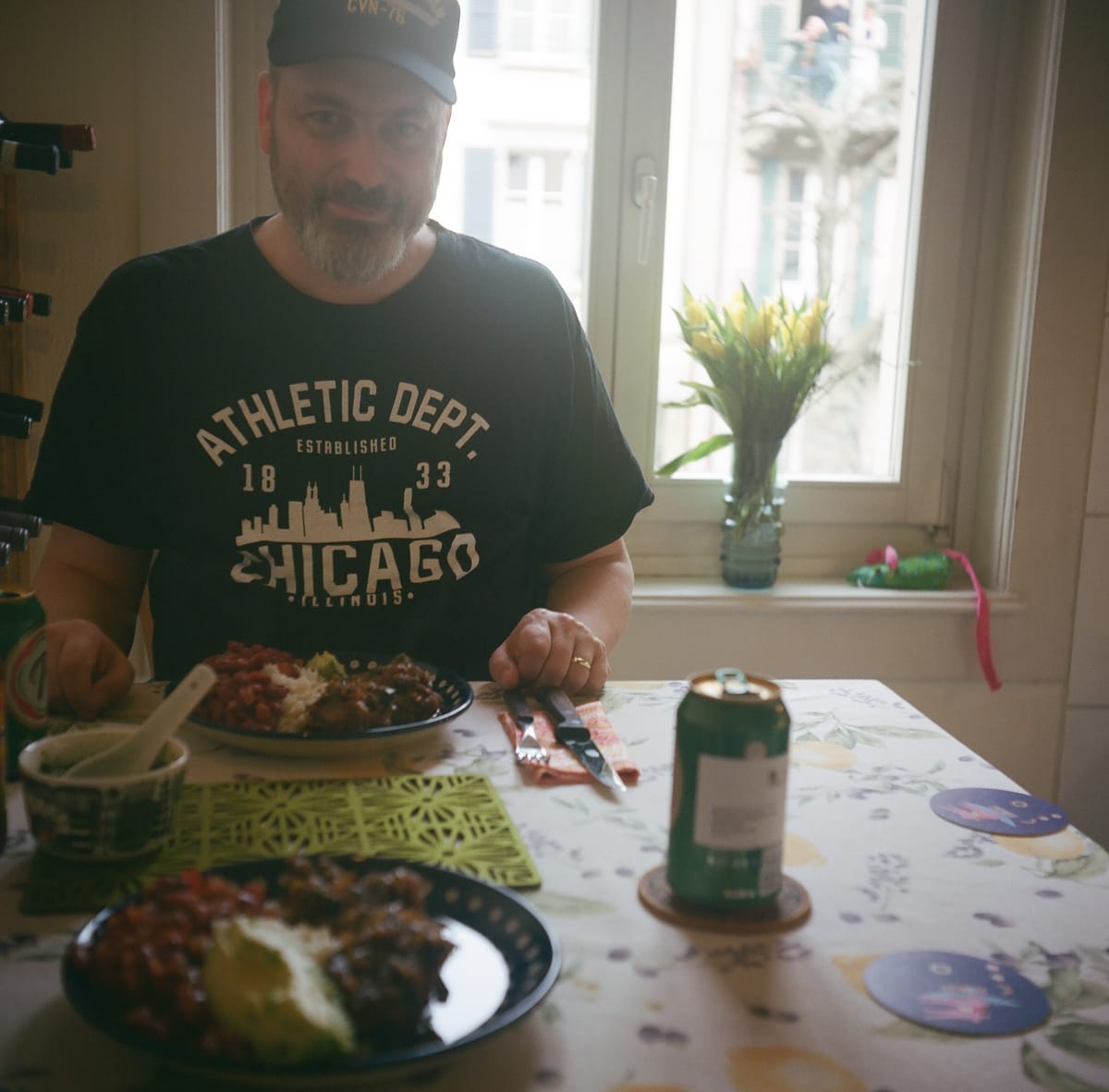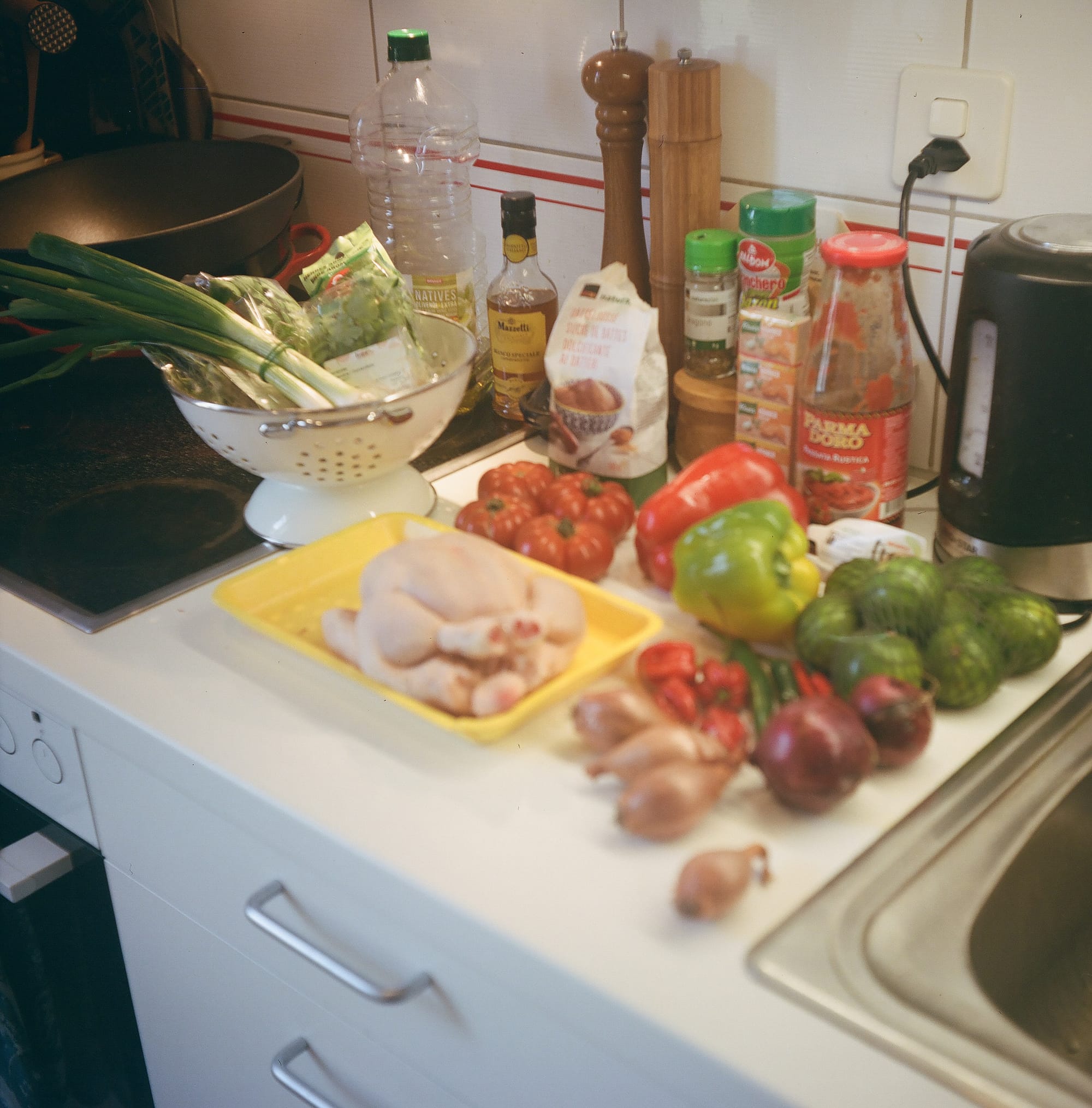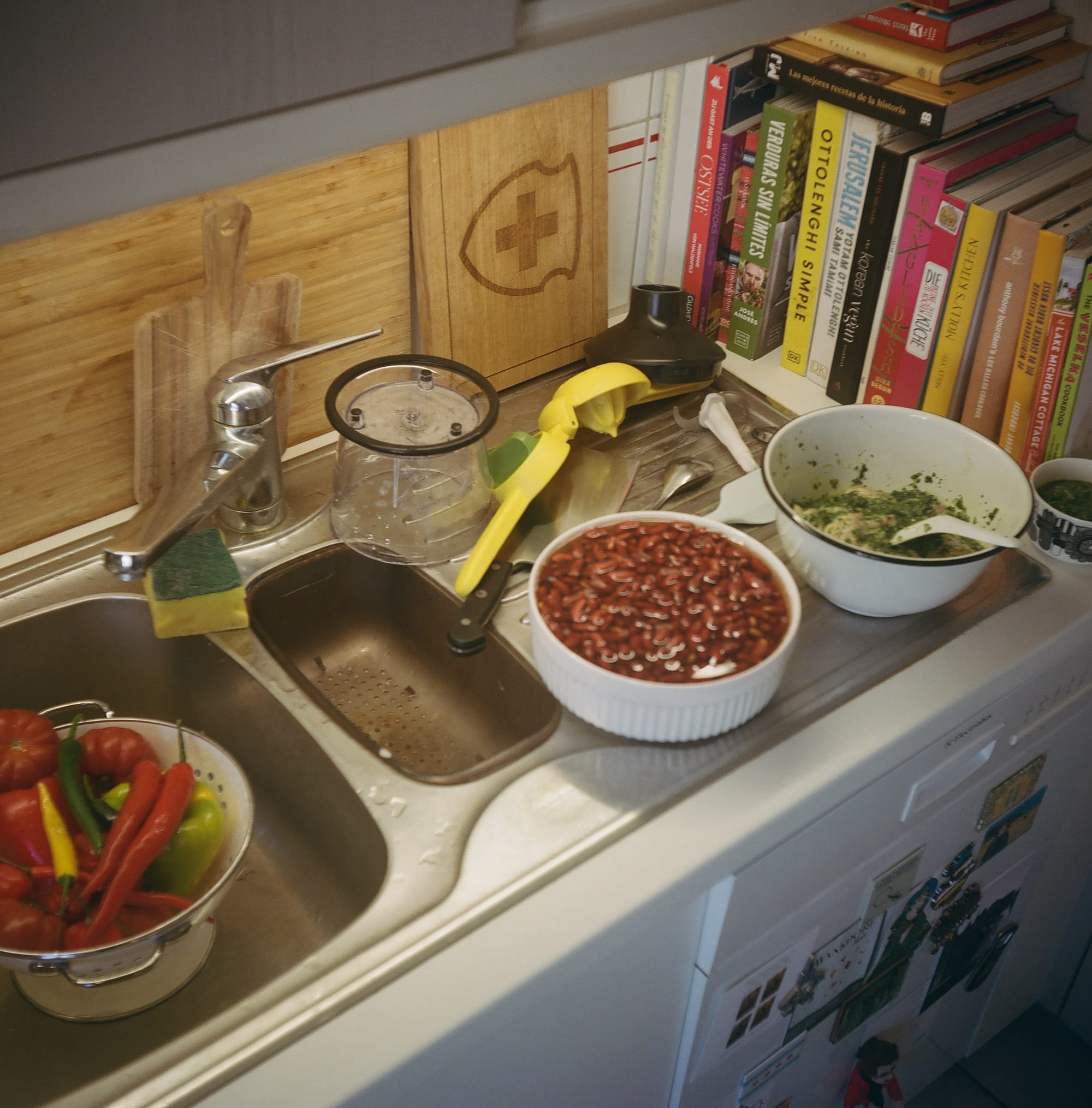What to eat DOMINICAN REPUBLIC 🇩🇴 La bandera (dominicana)
Like much in the new world, the national dish of the Dominican Republic tells the history of exploration, conquest and independence... La bandera is typically served at lunch in the Dominican Republic, often several times a week, making it one of the most commonly consumed national dishes around.

La bandera (dominicana)
Published May 24, 2024 · by Amanda Rivkin Häsler
Like much in the new world, the national dish of the Dominican Republic tells the history of exploration, conquest and independence. Called the bandera, or flag in Spanish, for its resemblance to the country’s red, white and blue flag, la bandera dominicana consists of three essential ingredients: rice, habichuelas rojas or red kidney beans, and meat, often chicken due its economical price tag.
La bandera is typically served at lunch in the Dominican Republic, often several times a week, making it one of the most commonly consumed national dishes around. As in Spain, the country’s former colonial ruler, lunch is the big meal of the day, often lasting hours and enjoyed in the company of family.
The dish itself draws from the customary new world influences of the old world: former colonial power Spain, the triangle trade route with Africa that brought slaves as well as new culinary influences to the plantations along with an abundance of creativty born of circumstance, and the indigenous flavors of the natives, mistakenly believed to be Indians by flat-earther Europeans.
The origins of la bandera are traceable only so far as the country’s declaration of independence from Haiti, with which it shares the island Hispaniola, or “Little Spain,” so named by Columbus. While the Dominican Republic and Haiti share a brutal history of colonization, the culinary traditions of the two countries diverge significantly.

La bandera is said to resemble la bandera dominicana or the Dominican flag, though you have to stretch the mind a bit to see the meat as representing the blue parts of the flag, which stand for liberty. We used a green sauce as the basis of our stewed chicken, which is about as close to blue as can be considered conceivably healthy (and also tasty) to go with the meat. We borrowed a bit from a recipe from the island of Saint Vincent in the World Central Kitchen cookbook for inspiration in our version of la bandera.
The white and the red of the flag are a bit less of a stretch of the imagination. The rice is rather obviously the white parts of the Dominican flag, representing salvation. The habichuelas or red kidney beans are for the blood of the heroes of the island nation.
As for the origin of these ingredients, rice was introduced to Hispaniola by Europeans who acquired the grain through trade with Asia. The beans are believed to be native to the so-called new world. The entire plate is often served with avocado and a salad that includes tomatoes to introduce some freshness to the hot dish. As a meal, bandera dominicana is a hearty dish that is both affordable and enormously filling.
Recipe
Ingredients:
For the habichuelos:
500 grams of red kidney beans
Salt
4 small tomatoes
Oregano
Sazón criollo
200 grams of tomato sauce.
For the pollo:
1 whole chicken or several legs and chicken breasts, bone in
30-40 grams of cilantro
20 grams of ramps
20 grams of thyme
2 scallions
5 limes
Salt
Olive oil
White balsamic vinegar
2 tablespoons of date (or brown) sugar
For the habichuelas and the pollo:
Sunflower seed oil or neutral cooking oil
5 shallots (or one head of garlic)
3 red onions
2 bell peppers
5 Anaheim peppers
3 red chilis
5 habanero peppers
Chicken stock (Knorr bouillon cubes)
For the rice:
Jasmine rice
Olive oil
For garnish:
Avocado
Step 1: (For the habichuelas) Soak the beans in cold water the night before.
Step 2: (For the pollo) Wash the cilantro, ramps, thyme and scallions in cold water and pat dry with a paper towel. Remove the hard stems from the herbs and roughly chop the scallions and place in a food processor. Squeeze the juice from five limes and add to food processor along with one tablespoon of salt, olive oil and white balsamic vinegar and blend together. This is your green sauce.
Step 3: (For the pollo) Wash the chicken in water and vinegar and if you bought a whole chicken cut into smaller pieces. Cover with green sauce and set aside. Save any remaining green sauce for use as a condiment at the end.
Step 4: (For the pollo and habichuelas) Pull out two pots, one flat and deep for stewing the chicken and a taller one for the beans.
Step 5: (For the pollo and habichuelas) Chop all the shallots and red onions and divide between the two pots with two tablespoons of cooking oil for the chicken and three tablespoons for the beans in. Place both on low to medium heat and stir.
Step 6: (For the pollo and habichuelas) Now we quite literally prepare the heat. Chop all your peppers. For the chicken, set aside a bell pepper, three Anaheim peppers and the habaneros. For the beans, chop a bell pepper, two Anaheim peppers and the chilis. Add to the red onions and shallots when they become translucent and stir.
Step 7: (For the pollo) Add the peppers to the pan where the chicken will be cooked. Stir and add two tablespoons of date (or brown) sugar. Then add the chicken and place on medium to high heat until golden brown, turning the chicken over as needed.
Step 8: (For the habichuelas) Add the peppers to the second pot with shallots and red onions for the beans and stir. Add one tablespoon of salt and stir.
Step 9: (For the habichuelas) Slice four small tomatoes or 2-3 larger ones. Set aside.
Step 10: (For the pollo) Add half a liter of chicken stock to the chicken and stir. Place on low heat and cover. Allow to stew for over one hour.
Step 11: (For the habichuelas) Add the tomatoes to the shallots, red onions and peppers cooking in a tall pot awaiting the beans. Turn the heat to medium to high and add one tablespoon of oregano and sazon criollo and stir.
Step 12: (For the habichuelas) Drain and wash the beans and add to pot. Add two tablespoons salt and sazon criollo and stir. Add 200 grams of tomato sauce. Stir and cover.
Step 13: (For the habichuelas) After about 5-10 minutes, add 300 milliliters of chicken stock and cover. Turn down low to medium heat. Stir occasionally.
Step 14: (For the rice) About twenty minutes before the beans are done, make white jasmine rice. Use one and one-quarter cup water and three tablespoons of olive oil, bring to a boil before adding rice.
Step 15: Serve with the leftover green sauce (salsa verde), achiote sauce and avocado as well as fried plantains if desired.

Tips, tricks and notes:
Red kidney beans are not available at most supermarkets as they would be in the Americas, both dried and in a can, but dried ones can be found at Loeb Lebensmittel at Schauplatzgasse 39 in Bern.
For Presidente Dominican beer in Bern, visit Drinks of the World at the main rail station.
If you enjoy Caribbean islands cooking, the relief organization founded by Chef José Andrés, World Central Kitchen, has its own cookbook from the areas it has served, which includes an abundance of recipes from the Caribbean. The frequency of hurricanes and the proximity to Andrés' North American restaurant empire means that some of the organization’s earliest and oldest relief trips were to serve communities impacted by various hurricanes over the last decade.
Famously, World Central Kitchen served more meals to Puerto Ricans than the U.S. government following the devastating hurricane in 2017. A percentage of sales from the book funds the relief organization’s ongoing work around the world, in addition to the fact that the recipes themselves are damn tasty and wholly authentic, certainly providing us with some helpful hints and inspiration in developing our own recipes.
Learn where to eat Dominican food in Switzerland.
Follow our social media pages @swissglobaldining on Instagram, TikTok and YouTube